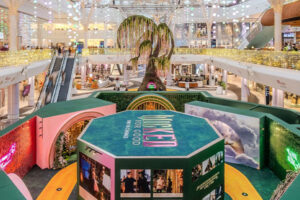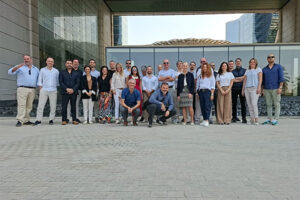BY ALEXANDER OTTO
Maybe it would help to look back at the unparalleled success story of shopping centers, especially on the occasion of a great anniversary. 50 years ago, in 1964, the opening of the Main-Taunus-Zentrum near Frankfurt marked the opening of Europe’s first modern shopping center. While there were only 14 significant shopping centers in Germany in 1970, that number has risen to more than 460 in 2014, according to the EHI institute. The “inventor” of this type of shopping center was the Austrian-American architect Victor Gruen, who had already designed the first centers in the US in the 1950s. Interestingly, he was also a keen supporter of established shopping destinations – he designed the world’s first pedestrian zone, which was established in Vienna in 1970.
Before shopping centers, so-called community markets – similar to large department stores – were the first to provide new shopping worlds. In this concept, the shops of retailers were not perceived as independent and could not stand out from one another. This model failed and was replaced by modern shopping center concepts in which individual retailers were allowed to realize their own shop designs. My father, Werner Otto, played a major role here. He brought the idea of modern centers from the US to Europe and developed the first enclosed shopping centers in Germany in the mid-1960s, such as Franken-Center Nürnberg, which is still performing very well today, and Alstertal-Einkaufszentrum in Hamburg, which has been modernized and extended time and again. This is why ECE is celebrating its 50-year anniversary in 2015. The history of the company is closely connected to that of the industry.
In the 1960s and the 1970s, developments were limited to greenfield sites because their realization was more profitable and there was more space to build large parking lots around the shopping centers. During the economic boom, sales areas were in high demand that could not be adequately met by old city centers.
By providing free parking and thus facilitating convenient, direct
access to the shops, greenfield developments were able to compete with the many established city centers and their cozy pedestrian zones for some time. However, after a few years, it became apparent that this was not enough. A new way of thinking took hold, especially in municipalities. Some city centers suffered from the impact of large project developments on urban fringes and city center desertion kicked in. Authorities responded by issuing fewer building permits for greenfield locations and there was a return to the city centers. By this time at the latest, Europe began going its own way with regard to the development of shopping centers. While centers in the US created an urban feel without cities, they were an addition to the established city centers in (Western) Europe. Every shopping center is as diverse as the continent itself. Their size varies from a few thousand to 100,000 sq m, depending on the culture, competition, and statutory regulations. In Southern Europe, especially in Turkey, large entertainment areas are required; the food court tradition there has already reached Western Europe as well.
Shopping centers have weathered 50 years of rapid changes in European countries and in the retail industry without significant injuries. It is in the DNA of developers and operators to re-invent themselves time and again. Looking back therefore gives us courage for the future: The internet is not the end of shopping centers. Here’s to the next 50 years!
What is your opinion on this topic? Discuss it with us! Send your opinion to opinion@across-magazine.com !






